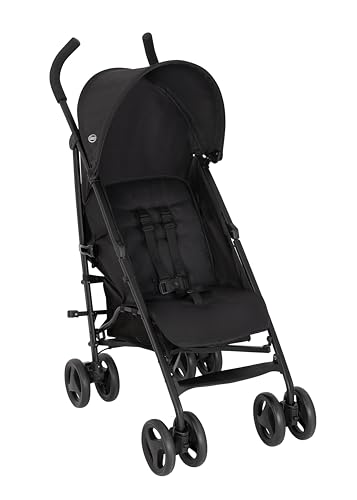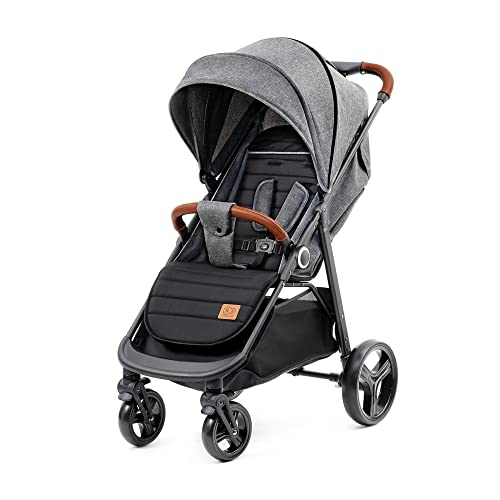Choosing Pushchairs For Your Baby
A stroller, pushchair or buggy is a means of transport for infants and toddlers. Infants must be able to lie flat, which is the reason prams come with bassinets or carry cots and some even include a frame you can attach the cot to.
When a baby is in good head control and is able to sit up and sit up, they can use the pushchair with a seat that faces away towards or away from you. Many come with useful features, such as swinging wheels or enclosed carrycots, which can be used in 3 in 1 systems.
Rear-facing
There are a lot of choices to pick from when choosing a pushchair for a brand new baby. These include prams, pushchairs, buggies, and strollers. They may sound similar but there are significant differences between them. A pram is designed to lie flat, while a pushchair allows a seated position. Some babies can use both, whereas others will need a carrycot to make their necks stronger and allow them to sit comfortably.
The majority of experts agree that it is recommended to use a pushchair for infants with the parent facing pushchair facing forward for infants until a few months old. Babies are drawn to their parents’ faces and enjoy the visual connection that it provides. Eye contact is crucial for their emotional development as they begin to process the stimuli around them. They also start developing language skills as they watch how their parents interact with them.
When babies can see their parents it gives them a sense of security and trust. They know they can count on their parents to safeguard their children and guide them through their environment. This early trust can contribute to a child’s overall confidence and well-being when they grow into toddlers and discover the world on their own.
You can easily observe your child while they are in the pushchair. You can quickly check if your baby is comfortable and content. Also, you can ensure that their hat is not covering their eyes and the wind isn’t blowing into their face. Babies who are able to see their parents are more likely to sleep because they feel comforted by the familiarity of their faces.
There are many options available if you would like to keep your baby in a pushchair that is facing the parent for as long as you can. Some pushchairs are able to be switched between parent-facing or forward-facing, while others come with an extendable footmuff that can keep the cold out or a rain cover to shield your child from the elements. The Eezy Twist+2 pushchair is a great example of a multi-purpose pushchair. It can be changed from a rear facing model to a front facing seat unit by simply pulling an lever. It can be fitted with an Cocoon S Car Seat, Cot S Carrycot, or a carrycot for a 4-in-1 travel system.
Forward-facing
A pushchair that is facing forward allows babies to explore and absorb the sights and sounds of their surroundings. They can also interact with their parents, which is important for the social development of your child. Based on their own developmental milestones, the majority of babies will be ready to switch from the carrycot or pram for newborns to a forward-facing pushchair at approximately six months. If they have enough neck and head control to to safely face forward, it’s the right time.
Research suggests that when babies sit with their parents from the front of a pushchair, they are more likely to talk back and have a lower heart rate, which suggests that they feel less stressed. They also pay more attention to what is going on around them and with their parents. This stimulates their minds and help develop their communication skills. Parents are more likely to speak to their babies when they have eye contact with them. This is calming and comforting for them.
You can use a pushchair with a front-facing seat since the time of birth. This allows you to go on longer walks. You can bring your child along shopping or for other activities that require walking. A pushchair or stroller will allow your child to participate in the same activities as their older siblings, which can help them build confidence and self-esteem.
Find a pushchair that comes with a variety of accessories, including a seat liner, footmuff and pram blanket. A hood and a parasol are essential to shield your baby from the sun, particularly in hot temperatures. Look for a parasol that has an SPF or UV 50+ rating, and make sure it’s made to fit in your pushchair and is easy to attach. Certain brands offer a range of accessories. Some are available in a bundle along with the pushchair. Other items can be purchased separately.
Many pushchairs can be converted into doubles by adding a second seat unit or carrycot. This is especially beneficial for families who will be expecting another child shortly after the first. Some of these models come with everything you need to make the switch, and some include an adapter kit that can be purchased separately.
All-terrain
 If you live on a country road, enjoy a walk in the woods or go hiking frequently then you’ll require pushchairs that are designed for rough paths and rutted terrain. All-terrain pushchairs are designed to withstand any terrain and are equipped with features like suspensions to cushion bumpy rides for your child so they won’t get shaken up more. They also come with a seat that’s angled to disperse the force and impact of the bumpy ground evenly over your child’s neck and head, so they won’t be shaken as much as they might in a lower-quality stroller.
If you live on a country road, enjoy a walk in the woods or go hiking frequently then you’ll require pushchairs that are designed for rough paths and rutted terrain. All-terrain pushchairs are designed to withstand any terrain and are equipped with features like suspensions to cushion bumpy rides for your child so they won’t get shaken up more. They also come with a seat that’s angled to disperse the force and impact of the bumpy ground evenly over your child’s neck and head, so they won’t be shaken as much as they might in a lower-quality stroller.
Most all-terrain pushchairs have three wheels and include an front wheel that can pivot and lock into place to ensure maximum maneuverability, which is crucial for rough terrain. They also have bigger tires than the typical pushchair. This means that they can handle rougher paths and offer a more comfortable ride for you child.
When shopping for a all-terrain pushchair Another thing to consider is whether the wheels have foam or air filling. Air-filled tyres feel smoother on rough terrain, but they can puncture more easily if you hit something sharp. Foam-filled tires are more durable and less likely to puncture. This makes them the best option for a stroller that can be used on all terrains.
Some all-terrain strollers can be converted from single to double mode, for a growing family. Others can be used as travel systems with car seat adaptors. They are great for parents who are new. Some models, like the Out ‘n’ About Nipper are suitable for newborns thanks to their flat seats and the fact you can use a carrying cot with them.
The Nipper comes with a variety of accessories for pushchairs, including a footmuff and raincover. It has a single-hand fold and is freestanding when folded, so it’s easy to put away. It also features a 360 swivel lockable front wheel and foam-filled never-flat tyres, so you don’t need to worry about punctured on your walks.
Weight
 The right pushchair will influence your travel style and the comfort of your baby. The right model will allow your child to develop and grow in a comfortable environment, allowing you to enjoy all the family adventures that are yet to come. This is a significant investment, so ensure you choose one that suits your lifestyle and budget.
The right pushchair will influence your travel style and the comfort of your baby. The right model will allow your child to develop and grow in a comfortable environment, allowing you to enjoy all the family adventures that are yet to come. This is a significant investment, so ensure you choose one that suits your lifestyle and budget.
The first step is to understand the difference between a pushchair, pram and buggy, as well as the differences between a travel system and a single pushchair. This guide will help parents comprehend the terminology and determine which is best for their newborn baby.
As the name suggests, a pram is designed for newborns or babies from 6 months to 6 years of age. It allows your baby’s back to grow properly, allowing them to sleep on their backs. Some models also come with an attachment for a bassinet that can be used during the beginning of the first few months, providing your baby a safe and comfortable space.
However, you must be aware that not all pushchairs that claim they can lie flat actually can. Be wary of the manufacturers’ claims that a pushchair can recline completely flat. Always look over the fine print to find out what it really means. Some pushchairs only recline slightly, which is still superior to an entire recline seat.
If your baby is able to sit up without assistance, it’s the right time to place them in the pushchair. This usually occurs between three to four months. However certain babies may begin sitting up earlier. It is best to get a pushchair that can adapt from a carrycot into an actual seat, so you have the flexibility you need and ensure your baby’s safety until they’re ready to move on to the next stage.
A lightweight pushchair (https://gigatree.eu/forum/index.php?action=profile;u=782852) with one pedal brake is usually favored by parents, particularly those who want to be able to stop and chat or have their hands free for carrying shopping bags. Our MFM home tester Jessica gave this pushchair a thumbs up, saying “it handles superbly with a lovely, smooth ride and the one-handed fold is a dream”. The lightweight model comes with Tru-Ride tyres that are durable, puncture resistant and provide a high degree of performance.

 by elijahsoriano74
by elijahsoriano74